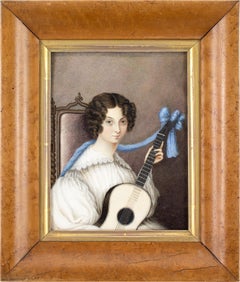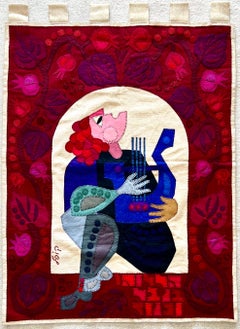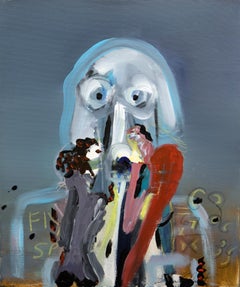Folk Art Art
Early 19th Century Folk Art Art
Canvas, Oil
1830s Folk Art Art
Watercolor, Paper, Gouache
20th Century Folk Art Art
Wool, Felt
1990s Folk Art Art
Mixed Media
2010s Folk Art Art
Acrylic
2010s Folk Art Art
Acrylic
2010s Folk Art Art
Mixed Media
2010s Folk Art Art
Mixed Media
2010s Folk Art Art
Mixed Media
2010s Folk Art Art
Acrylic
2010s Folk Art Art
Acrylic
1990s Folk Art Art
Photographic Paper, Archival Paper, C Print, Color, Polaroid
1970s Folk Art Art
Stone
2010s Folk Art Art
Blown Glass
2010s Folk Art Art
Acrylic
Mid-19th Century Folk Art Art
Paper, Ink, Silk
1950s Folk Art Art
Wool
Mid-20th Century Folk Art Art
Silk, Paper, Ink
1950s Folk Art Art
Wool
Artist Comments
A yellow tabby cat captures attention with its enigmatic and inviting gaze. Behind it, the dog shows a protective aura, silently vowing loyalty and friendship. ...
21st Century and Contemporary Folk Art Art
Mixed Media
1950s Folk Art Art
Wool
20th Century Folk Art Art
Gouache
20th Century Folk Art Art
Gouache
Artist Comments
A young man leans on his dragon friend, engrossed in a book, while the gentle giant surveys the woods. Both immerse themselves in the beauty of the world, wheth...
21st Century and Contemporary Folk Art Art
Acrylic
20th Century Folk Art Art
Gouache
1990s Folk Art Art
Archival Paper, Photographic Paper, C Print, Color, Polaroid
20th Century Folk Art Art
Etching
20th Century Folk Art Art
Etching
20th Century Folk Art Art
Gouache
1990s Folk Art Art
Photographic Paper, Archival Paper, C Print, Color, Polaroid
1990s Folk Art Art
Photographic Paper, Archival Paper, C Print, Color, Polaroid
1990s Folk Art Art
Photographic Paper, Polaroid, Archival Paper, C Print, Color
20th Century Folk Art Art
Etching
1990s Folk Art Art
Photographic Paper, Archival Paper, C Print, Color, Polaroid
1990s Folk Art Art
Archival Paper, Photographic Paper, C Print, Color, Polaroid
20th Century Folk Art Art
Gouache
1990s Folk Art Art
Archival Paper, Photographic Paper, C Print, Color, Polaroid
1990s Folk Art Art
Archival Paper, Photographic Paper, C Print, Color, Polaroid
1990s Folk Art Art
Archival Paper, Polaroid, Color, C Print, Photographic Paper
1990s Folk Art Art
Archival Paper, Photographic Paper, C Print, Color, Polaroid
1990s Folk Art Art
Archival Paper, Photographic Paper, C Print, Color, Polaroid
20th Century Folk Art Art
Etching
1990s Folk Art Art
Archival Paper, Photographic Paper, C Print, Color, Polaroid
20th Century Folk Art Art
Gouache
20th Century Folk Art Art
Gouache
2010s Folk Art Art
Oil
20th Century Folk Art Art
Etching
20th Century Folk Art Art
Etching
20th Century Folk Art Art
Etching
1830s Folk Art Art
Paper, Watercolor, Gouache, Pencil
2010s Folk Art Art
Acrylic
Early 2000s Folk Art Art
Marble
2010s Folk Art Art
Oil
2010s Folk Art Art
Oil
2010s Folk Art Art
Oil
2010s Folk Art Art
Oil
Artist Comments
A white horse halts, observing a black dress gently swaying in the breeze. Multiple layers of oil paint infuse the composition with a distinct character, allowi...
21st Century and Contemporary Folk Art Art
Oil
2010s Folk Art Art
Oil





